This article describes the transport in Peru.
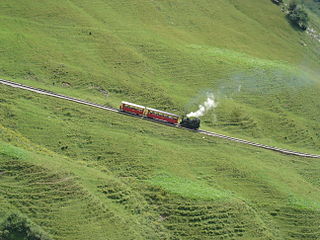
A mountain railway is a railway that operates in a mountainous region. It may operate through the mountains by following mountain valleys and tunneling beneath mountain passes, or it may climb a mountain to provide transport to and from the summit.

Lake Titicaca is a large, deep, freshwater lake in the Andes on the border of Bolivia and Peru, often called the "highest navigable lake" in the world. By volume of water and by surface area, it is the largest lake in South America.
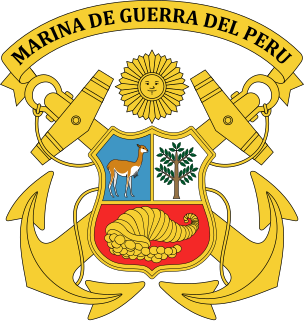
The Peruvian Navy is the branch of the Peruvian Armed Forces tasked with surveillance, patrol and defense on lakes, rivers and the Pacific Ocean up to 200 nautical miles from the Peruvian littoral. Additional missions include assistance in safeguarding internal security, conducting disaster relief operations and participating in international peacekeeping operations.

Puno is a department in southeastern Peru. It is the fifth largest department in Peru, after Cuzco, Madre de Dios, Ucayali, and Loreto It is bordered by Bolivia on the east, the departments of Madre de Dios on the north, Cusco and Arequipa on the west, Moquegua on the southwest, and Tacna on the south. Its capital is the city of Puno, which is located on Lake Titicaca in the geographical region known as the Altiplano or high sierra.

Tacna is the southernmost department in Peru. The Chilean Army occupied the present-day Tacna Department during the War of the Pacific from 1885 to 1929 when it was reincorporated into Peruvian soil; today, it is known for being one of the most patriotic areas in the country.

Yavari is a ship commissioned by the Peruvian government in 1861 for use on Lake Titicaca. She is named after the Javary River in the Loreto Region of Peru, bordering the Amazonas State (Brazil).
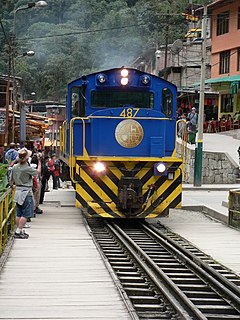
PeruRail is a railway operator providing tourist, freight, and charter services in southern Peru. It was founded in 1999 by 2 Peruvian entrepreneurs and British company Sea Containers.

Rail transport in Peru has a varied history. Peruvian rail transport has never formed a true network, primarily comprising separate lines running inland from the coast and built according to freight need rather than passenger need.
Earle's Shipbuilding was an engineering company that was based in Hull, East Riding of Yorkshire, England from 1845 to 1932.
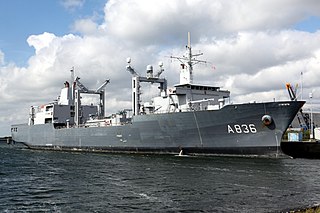
HNLMS Amsterdam was the last replenishment oiler serving with the Royal Netherlands Navy. Amsterdam entered service on 2 September 1995 and replaced the HNLMS Poolster (A835). On 4 December 2014 it was decommissioned and sold to the Peruvian Navy where it was renamed BAP Tacna.
Guaqui is a railhead and port in Bolivia on Lake Titicaca. A ferry connects with the Peruvian railhead and port on Puno. It served as location of Inca ruins prior to the arrival of the Spanish. The towns current church sites on what was the ancient ruins.
SS Coya is a 19th-century iron-hulled steamship on Lake Titicaca. After a long history carrying freight and passengers she is currently a floating restaurant.
SS Inca was a steamship on Lake Titicaca.
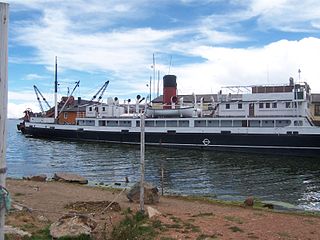
SS Ollanta, built in England in 1931, is a steamship on Lake Titicaca in Peru.

The introduction of fast torpedo boats in the late 19th century was a serious concern to navies of an era that saw a number of innovations in naval warfare, including the first torpedo boats, which carried spar torpedoes, steam propulsion and steel ships.

Escuela Municipal Deportivo Binacional or Binacional is a Peruvian football club from Desaguadero District in the Puno Region who currently plays its home games in the city of Juliaca. The team currently plays in the Peruvian Primera División.

The Aymara kingdoms, Aymara lordships or lake kingdoms were a group of native polities that flourished towards the Late Intermediate Period, after the fall of the Tiwanaku Empire, whose societies were geographically located in the Qullaw. They were developed between 1150 and 1477, before the kingdoms disappeared due to the military conquest of the Inca Empire. But the current Aymara population is estimated at two million located in the countries of Bolivia, Peru, Chile and Argentina. They used the Aymara and Puquina languages.













